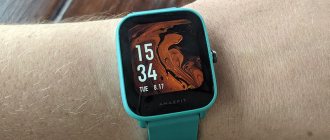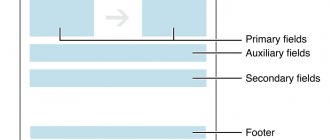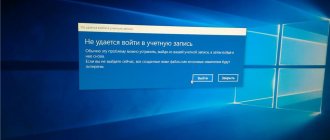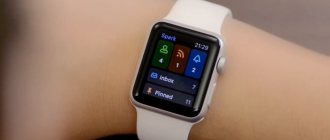We wrote about the predecessors of the ZTE Blade V8. Both the Blade V7 and Blade V7 Max made a definitely good impression - they are not very outstanding in terms of characteristics, but they are well-built and confidently operating mid-range devices. Metal body, Full HD display, a normal set of features for our time and average performance. About what you expect from a smartphone for 15-16 thousand rubles. But they obviously lacked zest, and in some ways they even lagged behind modern trends.
ZTE Blade V8 just corrects their mistakes. Firstly, a fingerprint scanner appeared here - without it, in our time, it’s a shame for even basic models with a price of up to 10 thousand rubles to enter the market. Secondly, an important competitive advantage has been added - a serious 13 megapixel selfie camera. Well, thirdly, that very special feature has appeared - a dual camera, which does not add optical zoom to the device and does not improve shooting in the dark, but helps with software blurring of the background and 3D shooting. Just as we were putting this technology into the past on televisions, it suddenly popped up in the most unexpected place.
Otherwise, the Blade V8 is exactly what you would expect from an older smartphone in this family: a metal block with a medium-diagonal display and a current, but not the most powerful, system-on-chip. But there is a surprise here too - instead of the usual Mediatek solution, the Blade V8 featured the Qualcomm Snapdragon 435 platform. And this is definitely good news.
Review of the ZTE Blade V8 smartphone and its characteristics
Nowadays there may be a myriad of smartphones on the world stage, but they all look the same and have identical characteristics. Sometimes it can be very difficult to distinguish devices from different manufacturers. In this crowd, the ZTE Blade V8 stands out, which, at a very affordable price, offers an unprecedented list of characteristics for its segment: a dual camera that can take three-dimensional images, a fingerprint scanner, and a cardboard reader included. While conducting a review of the ZTE Blade V8 lite, we will try to consider in detail all its features, evaluate the build quality, performance, and introduce you to its design and capabilities.
Specifications of ZTE Blade V8:
- Screen: 5.2″, IPS, 1920×1080, 423 ppi
- Processor: Octa-core Qualcomm Snapdragon 435, 1.4 GHz
- Graphics accelerator: Adreno 505
- Operating system: Android 7.0 (MiFavor 2.0)
- RAM: 3 GB
- Built-in memory: 32 GB
- Memory card support: microSD up to 128 GB
- Communication: GSM 850/900/1800/1900 MHz || UMTS 850/900/2100 MHz || LTE 1, 3, 7, 8, 20
- SIM: nano-SIM + nano-SIM (combined slot)
- Wireless interfaces: WiFi 802.11a/b/g/n, Bluetooth 4.1
- Navigation: GPS (A-GPS), GLONASS, BeiDo
- Cameras: main - 13 MP, secondary - 2 MP, front - 13 MP
- Sensors: proximity, light, accelerometer, compass, Hall, microgyroscope, fingerprint scanner
- Battery: 2730 mAh, non-removable
- Dimensions: 148.4×71.5×7.7 mm
- Weight: 141 grams
Mobile networks
Mobile network specification for this smartphone (tablet). What frequencies does the device use?
| GSM GSM (Global System for Mobile Communications) is designed to replace the analogue mobile network (1G). For this reason, GSM is often called a 2G mobile network. It is improved by the addition of GPRS (General Packet Radio Services), and later EDGE (Enhanced Data rates for GSM Evolution) technologies. | GSM 850 MHzGSM 900 MHzGSM 1800 MHzGSM 1900 MHz |
| UMTS UMTS is an abbreviation for Universal Mobile Telecommunications System. It is based on the GSM standard and belongs to 3G mobile networks. Developed by 3GPP and its biggest advantage is providing greater speed and spectral efficiency thanks to W-CDMA technology. | UMTS 850 MHzUMTS 1900 MHzUMTS 2100 MHz |
| LTE LTE (Long Term Evolution) is defined as a fourth generation (4G) technology. It is developed by 3GPP based on GSM/EDGE and UMTS/HSPA to increase the capacity and speed of wireless mobile networks. The subsequent technology development is called LTE Advanced. | LTE 800 MHzLTE 850 MHzLTE 900 MHzLTE 1800 MHzLTE 2100 MHzLTE 2600 MHz |
Equipment ZTE Blade V8
Not only the smartphone itself is surprising, but also its packaging. It is a blue cardboard box inserted into a black shell. When you start unpacking the package, you realize that these are essentially ready-to-use virtual reality glasses.
As shown by the ZTE Blade V8 lite blue review, inside, in addition to the smartphone itself, there is a network adapter with parameters of 5 V/1.5 A, a USB cable, headphones, a clip for accessing the SIM card tray, as well as a moderately thick instruction manual and documentation.
Design
A review of the ZTE Blade V8 smartphone shows that it has a thin all-metal body, which contains only two plastic inserts for antennas. They are used to improve the quality of communication reception.
The front side is completely covered by glass, which provides a high degree of protection against scratches. But it is unlikely to save you from falling, so if you want your smartphone to retain its impeccable appearance for a long time, then it is better to wear it in a stylish bumper and with a protective glass glued on.
Under the display of the ZTE Blade V8, a mechanical “Home” key was installed with a fingerprint scanner built into it. On either side of it there are two touch-sensitive keys with bright blue backlighting. Due to this, it will be comfortable to work with the phone even in complete darkness.
Above it we see the earpiece, sensors, front camera and LED event indicator.
The right side is occupied by the power control key and the volume rocker.
On the left is a combined tray for two SIM cards or one paired with microSD.
At the bottom there is a microUSB port, a microphone and an external speaker.
On top, all the elements are located in the usual way - a 3.5 audio jack for a headset and another microphone, necessary for noise reduction during a conversation and video recording.
The back cover has a matte structure, making it completely non-slip in the hand. The central space at the top is occupied by a dual main camera module and an LED flash for it. The lens rises approximately a millimeter above the body, so for your own peace of mind it is better to use the device in a case.
ZTE Blade V8 64gb review shows that there are narrow frames along the perimeter of the display, which you stop paying attention to after just a few days of use. This, combined with rounded corners, ensures good ergonomics of the case. It is comfortable to use even with one hand. The backdrop may have a gentle shape, but it does not try to slip out of your hand thanks to its matte structure.
The width of the case is within normal limits, but the height is a little higher than you would expect with a diagonal of 5.2 inches. In this regard, not every user will be able to reach its top point with the fingers of one hand. If it’s not convenient for you, but you still can’t connect your second hand to control your smartphone, then in the settings you can enable a special mode that limits the working area of the display.
While conducting a review of the ZTE Blade V8 32gb, we were convinced of the excellent build quality of the case - there are no backlashes or creaks.
Display
The ZTE Blade V8 phone has a 5.2-inch IPS LCD display with a resolution of 1920x1080 pixels. It is covered with protective glass Gorilla Glass 3, made with the now fashionable 2.5D effect. The finger glides well over the surface, leaving virtually no fingerprints, which is a merit of the high-quality oleophobic coating. It only supports 5 simultaneous touches. The combination of resolution and screen diagonal was chosen perfectly - the pixel density reaches 423 ppi.
The review of the ZTE Blade V8 lite smartphone showed that the colors are moderately bright and saturated, and the viewing angles are close to maximum. Only with a significant tilt does the saturation of the shades drop slightly. If the factory calibration of the display does not suit you in any way, then using the MiraVision software you can select one of several color rendering modes, as well as manually adjust the color saturation.
The screen performed well outdoors; the brightness is enough for use on a sunny summer day. But the minimum mark is slightly too high, which is why reading in the dark can be a little uncomfortable at first. Instead, you can activate the Blue Filter mode, which reduces eye strain.
Performance of ZTE Blade V8
ZTE Blade V8 technical specifications are built on a Snapdragon 435 chip with 8 cores up to 1.4 GHz. The Adreno 505 graphics accelerator, 3 GB of RAM and 32 GB of internal memory complete the overall picture. About 22 GB remains for the user's needs. By abandoning the second SIM card, you can install a flash drive with a capacity of up to 128 GB.
ZTE Blade V8 test in Antutu
ZTE Blade V8 characteristics ensure smooth operation of the interface and scrolling pages in the browser. The smartphone easily plays videos in FullHD quality, both online and from the device’s memory. The hero of our review performed well in games, but in order to get the most out of it, we set the energy saving settings to “Maximum performance” mode.
USB
USB (Universal Serial Bus) is an industry standard that allows different electronic devices to exchange data.
| Connector type There are several types of USB connectors: standard, mini, micro, On-The-Go, etc. The type of connector that the device uses. | Micro USB |
| version has several versions: USB 1.0 (1996), USB 2.0 (2000), USB 3.0 (2008), etc. In each subsequent version, the data transfer speed increases. | 2.0 |
| Characteristics The USB interface in mobile devices can be used for various purposes, for example, to recharge the battery, use the device as mass storage, host, etc. | USB Charging Data Storage On-The-Go |
Interface
As the ZTE Blade V8 64gb black edition review showed, the smartphone has a fingerprint scanner, which works accurately, but it takes about a second from the moment of pressing until the screen is removed from the lock. Out of 10 test presses, all 10 worked. In the settings, you can assign different functionality to it, linking the launch of different applications to a specific fingerprint.
Out of the box, the phone runs on Android 7.0 with the proprietary MiFavor 4.2 shell. It is distinguished by the absence of an application menu, a large selection of wallpapers and themes, as well as an interactive lock screen with changing images. They are loaded from virtual storage with an active Wi-Fi connection.
Results
The ZTE Blade smartphone, model V8, has a stylish design. It has a number of advantages:
- One-piece aluminum body
- Quality cameras
- Screen with excellent performance
- Good sound
- Virtual reality support
- Low price
Flaws:
- The smartphone processor is not very strong
- Wi-Fi does not work on 5 GHz frequency
- No NFC module
- Phone battery life is low
- The battery is not removable.
A virtual reality
ZTE Blade V8 32 GB review moves on to one of the key features of the device that competitors cannot boast of. This is especially true now, in the era of active development of virtual reality technologies. The smartphone box can be transformed into an analogue of the Cardboard helmet. The function works using the pre-installed GoVR Player software, in which over 80 videos in 2D and 3D format are currently available. But when used in this mode, the ZTE Blade V8 heats up noticeably.
Audio file formats and codecs
Mobile devices support different audio file formats and codecs, which respectively store and encode/decode digital audio data.
| Audio file formats/codecs A list of some of the main audio file formats and codecs supported by the device as standard. | AAC (Advanced Audio Coding)AAC+ / aacPlus / HE-AAC v1AMR / AMR-NB / GSM-AMR (Adaptive Multi-Rate, .amr, .3ga)eAAC+ / aacPlus v2 / HE-AAC v2FLAC (Free Lossless Audio Codec, . flac)MIDIMP3 (MPEG-2 Audio Layer II, .mp3)OGG (.ogg, .ogv, .oga, .ogx, .spx, .opus)WMA (Windows Media Audio, .wma)WAV (Waveform Audio File Format, .wav, .wave) |
Autonomy
Smartphone ZTE Blade V8 32gb gold review moves on to the battery. The manufacturer clearly pursued the goal of creating a device with a very thin and practical body, while it was necessary to significantly reduce the battery capacity - 2730 mAh. There are several energy saving scenarios available in the settings that you can use to get the most out of the remaining charge. In the settings, you can select a mode with reduced performance but increased battery life, or vice versa. Balanced mode is selected as standard.
ZTE Blade V8 64 GB review showed that at maximum brightness it lasted 5.5 hours with continuous playback of video content. In an hour of playing Asphalt with an active Wi-Fi connection and 50% brightness, 30% of the charge was consumed. You can expect a day of moderate use with 4.5 hours of display activity.
Specific Absorption Rate SAR
The SAR level refers to the amount of electromagnetic radiation absorbed by the human body while using a mobile device.
| Head SAR Level (US) The SAR level indicates the maximum amount of electromagnetic radiation to which the human body is exposed when holding a mobile device near the ear. The maximum value used in the USA is 1.6 W/kg per 1 gram of human tissue. Mobile devices in the US are regulated by the CTIA, and the FCC conducts tests and sets their SAR values. | 0.78 W/kg (Watts per kilogram) |
| Body SAR Level (US) The SAR level indicates the maximum amount of electromagnetic radiation to which the human body is exposed when holding a mobile device at hip level. The highest permissible SAR value in the USA is 1.6 W/kg per 1 gram of human tissue. This value is set by the FCC, and the CTIA monitors mobile devices' compliance with this standard. | 0.66 W/kg (Watt per kilogram) |
ZTE Blade V8 camera review
The Blade V8 has a dual main camera with a 13 MP main module and a 2 MP secondary camera. HDR mode, autofocus and flexible camera settings are available, which allows advanced users to set ideal parameters depending on shooting conditions. The main camera can take photos with a maximum resolution of 4160x3120 pixels with an aspect ratio of 4:3. The video is recorded in FullHD.
ZTE Blade V8 camera review showed that you can enable geotagging and flicker reduction in the settings. The second module was added for a reason - it is used to beautifully blur the background, which has become fashionable in 2022.
Example photo on ZTE Blade V8
The phone handles shooting well in any conditions - it produces shots with natural color reproduction and decent detail. ZTE Blade V8 4gb 64gb review revealed that there is one exclusive feature - 3D photo mode. In it, the camera creates two images simultaneously for later viewing using VR glasses.
The front camera also has a resolution of 13 megapixels and shoots at a high level, no matter what lighting you are in.
Conclusion
The ZTE Blade V8 smartphone turned out to be a very unusual and controversial device - on the one hand, it has a far from top-end processor, but it has wonderful cameras, a high-quality screen, sound and support for virtual reality. The autonomy results are disappointing; I would like to go longer without a power outlet. Blade V8 is an ideal choice for those who are interested in photography, but do not have a very large budget for purchasing a new device.










